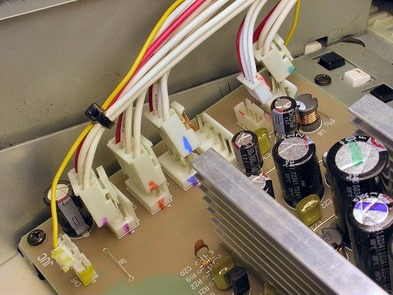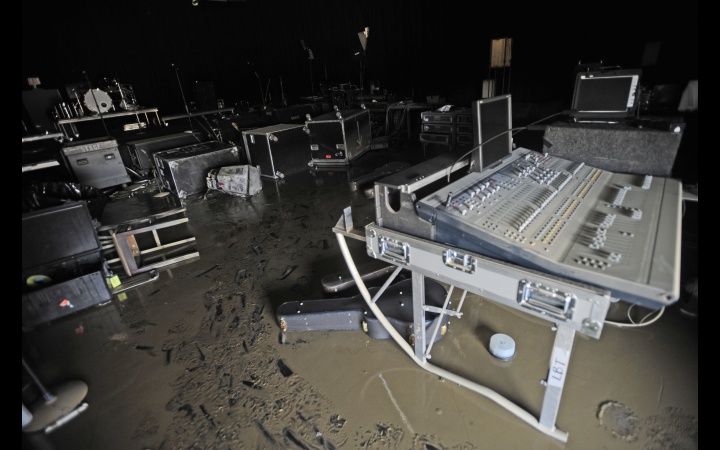|
Disclaimer: The following information is not for tube amplifiers of any sort. Tube amplifier circuits can have a high voltage/current potential, and can: A. make you lose control of your bowels. B. kill you. C. make you lose control of your bowels and kill you! If you don't know what you are doing with a tube amp or any other high voltage circuit, take it to a professional! 1st phase - TAKE IT APART! If you don't have colored markers, you can number and letter each connection. Also take a picture of everything before you disconnect it. If you don't have colored markers, you can number and letter each connection. Also take a picture of everything before you disconnect it. Once you get your gear out of the flooded area, it's time to jump right in and get it repaired. If you follow all the steps in this guide, you can have a fairly large chance at getting your gear operational again. The very first thing I want to tell you, is to not wipe the unit down before you take it apart. Don't wipe it down yet. This will keep extra dust and debris from getting into any type of controls, jacks, and sockets the unit may have. Also - resist the temptation in trying to power your flooded gear back up to see if it works. Keep power away from your flooded gear until we are done with all the steps in this guide and the others that are to follow.
0 Comments
Your comment will be posted after it is approved.
Leave a Reply. |
Do you like vintage recording gear and articles? You should visit our sister site: The Vintage Audio Portal!
**Advertise With Us! We have thousands of visitors a day. Contact us here to learn more.
Archives
August 2021
Categories |

